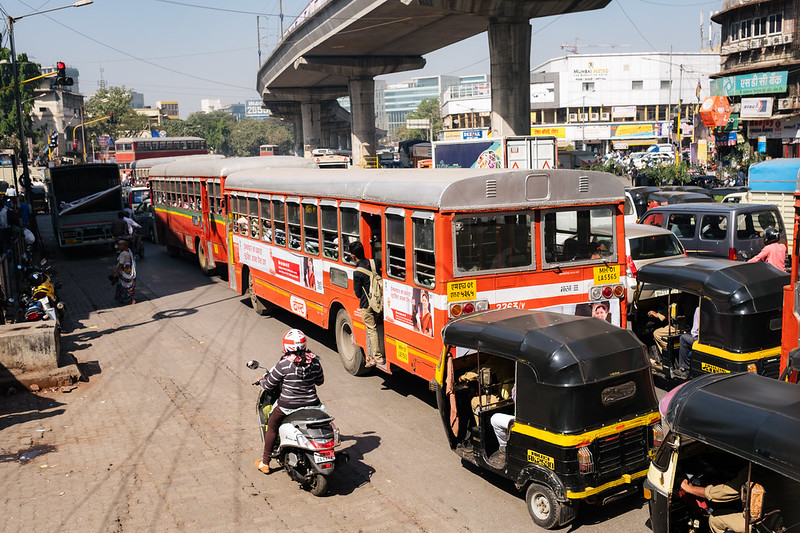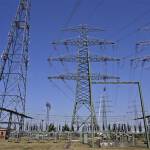
1. Set Clear Targets and Define Long-Term Visions
In China, India and Vietnam, demand for mobility and vehicle ownership are expected to increase drastically with rapid urbanization, economic development and population growth (at least in the case of India and Vietnam). In the face of this growing motorization, the NDC-TIA’s Path to Zero Council Report calls for enhanced ambition and specific transport targets in climate commitments. As of April 2022, 38 countries in Asia had submitted updated NDCs or second NDCs; only Bangladesh, Georgia, Japan, Sri Lanka, Israel and Vietnam contain a quantitative GHG emission reduction target for the transport sector. More countries contain other types of targets – for example, related to electric vehicles, efficiency improvements or biofuels. China, India and Vietnam have, however, set economy-wide carbon neutrality goals with different approaches to translating targets into domestic policies.
China submitted its updated NDC and LTS in 2021, outlining ambitious goals for carbon peaking before 2030 and to be carbon neutral before 2060. The target is not yet enshrined in an official law but has become a core focus and narrative across all policy documents across national and subnational governments. In alignment with its updated NDC, China’s “1+N” policy system is ambitious and seeks to accelerate the development of an integrated multi-modal transport network and includes policy actions to promote low-carbon transport. WRI China’s analysis reveals that subnational governments have had difficulty setting transport emission reduction targets due to the lack of transport statistics and unified transport emission accounting methodologies. It is thus critical to develop credible transport CO2 emission inventories to allow sectoral target-setting and tracking of the decarbonization progress.
India’s updated NDC includes targets closer to its current level of climate action, when compared to its first NDC, however much deeper emission cuts and stronger targets are needed to put India on a 1.5-degree pathway. India does not have any transport-specific emission reduction targets in its updated NDC though it does envision railways to become net zero and rail to account for 45% of freight traffic by 2030 in its long-term strategy (LTS). The NDC-TIA Forum for Decarbonising Transport, an initiative of NITI Aayog and WRI India, has brought together climate modelers, transport policymakers, researchers and practitioners to deliberate on different models for carbon-neutral transport systems in the country. GIZ India is also modelling different pathways to achieve net-zero targets in the transport sector.
Notably, Vietnam committed to net zero by 2050 at COP26 with additional pledges related to methane emission reductions and coal phase out. The government entrenched its net-zero goal into law and released an updated NDC in 2022. The updated NDC provides a sectoral breakdown of targets and policies and puts forward a detailed implementation plan of the targets by improved policies and institutions, capacity building and technological development, financial requirements and international cooperation. Following the approval of its National Climate Change Strategy, the government announced an Action Programme on Green Energy Transformation which details steps to reduce carbon and methane emissions from transport. However, significant policy design and implementation across key sectors is still required, as well as alignment with its NDC. To aid this process, the NDC-TIA is supporting the government in developing transport emission models, electric mobility roadmaps and new financing mechanisms.
All three countries have announced non-legally binding electric vehicle (EV) targets. China set targets of a 20% share for “new energy vehicles” (NEVs) in new sales by 2025 and 100% electrification of the public fleet vehicle stock by 2035. To date, China has already surpassed the 20% EV share target and expects to reach a 40% share by 2030. India continues to promote EVs and set targets for new sales of light-duty vehicles (70% of commercial cars, and 80% of two- and three-wheelers to be electric by 2030). As of February 2021, 15 states in India have final or draft EV policies in place. In Vietnam, the government envisions to power 100% of buses by clean energy by 2025, and to have 50% of the vehicle fleet and 100% of taxis running on electricity and green energy by 2030.
2. Unlock Financing to Enable Systems Change
While the adoption of transport targets can help policymakers implement adequate measures to speed the low-carbon transition, financial instruments must align with these targets to enable action from the private sector and allow the provision of new services. As the demand for transport infrastructure simultaneously grows, this calls for countries to urgently facilitate investment in technology and sustainable infrastructure to prevent “lock-in” of carbon-intensive, non-sustainable pathways.
Although the provision of EV purchase subsidies can be costly, governments can explore incentives such as leasing and consumer financing to mitigate ownership risks. Market mechanisms with concessions can be a cost-effective way to build standardized charging networks and there are ways governments can help establish a stable long-term investment environment for charging point operators and manufacturers, as suggested by our study tour findings.
China’s rapid acceleration in electrification – China is the world leader in the rollout of EVs and charging infrastructure – is largely driven by the central and local governments, but it is facilitated by private sector innovations. A few key factors have supported the fast roll-out of electric bus fleets in many Chinese cities: the mandate to shift to clean energy buses, government subsidies that lowered upfront costs of vehicles, and a viable business model where stakeholders collaborate to share risks and improve financial efficiency. Leadership from local governments, such as in Shenzhen, has played a crucial role in piloting e-bus projects with innovative procurement solutions. To further decarbonize China’s road transport, WRI China estimates that large low-carbon investments amounting to 39–83 trillion Chinese Yuan ($5.7-12 billion) are needed from 2020 to 2060. Given the immense price tag, public investments won’t be sufficient to meet the needs. A more predictable regulatory environment and better access to finance would allow the private sector to play a bigger role in delivering innovative solutions.
India is rolling out e-bus deployment with aggregated tenders. With policy support like FAME II, the registration of new e-buses grew to 1,176 in 2021 as well as a tender for 5,450 e-buses for five Indian cities. To overcome high capital costs, Indian cities are experimenting with innovative procurement models and financial practices for bus fleets and have plans to increase charging infrastructure.
For Vietnam, the NDC-TIA is working with Hanoi and Ho Chi Minh City to analyze how to adapt the bus subsidy model for e-bus fleets, developing finance mechanisms for e-bus adoption and engaging financial institutions to mobilize new resources. VinFast, the first and largest domestic automobile and electric scooter producer in Vietnam, recently received $135 million in financing, led by the Asian Development Bank, to support manufacturing of e-buses and development of a national charging network for EVs.
3. Establish Multi-Stakeholder Platforms to Foster Collaboration
Siloed policymaking and disconnection between policy and implementation are critical barriers to transforming transport systems. NDC-TIA has worked to improve collaboration with government actors in China, India and Vietnam across different levels to improve the effectiveness of transport decarbonization policies.
To achieve goals set in China’s 1+N carbon neutrality policy system, we facilitate multi-stakeholder platforms across levels of government and ministries to ensure transport polices are crafted with the necessary whole-of-government approach. In Guangdong Province, NDC-TIA partners met with local authorities to understand the diverse responsibilities and needs of different departments. This helped to address data gaps for emissions accounting.
In India, the Forum for Decarbonizing Transport was launched to catalyze stakeholder engagement to support policymaking for more ambitious transport action. As part of the Forum, several workshops have been organized covering topics such as financing, carbon market regulation and modelling pathways for zero-emission transport.
In Vietnam, NDC-TIA has supported the Ministry of Transport in collaborating with international and domestic partners to develop an e-mobility roadmap and action plan. Through stakeholder engagement, research and knowledge exchange, we have also supported Ho Chi Minh City in developing Vietnam’s first city e-mobility action plan, which will be integrated into the city’s master plan.
More integrated, coherent and coordinated policy efforts across sectors are still needed, however. India has independent policies for the clean energy transition (e.g., in the draft National Electricity Plan published in September 2022) and for EVs (e.g., FAME II or other initiatives of EV mission). Similarly, in China and Vietnam, growing electricity demand from vehicle electrification will require a paradigm shift in how electricity systems work. Policymakers need to bring actors of different interests to the same table to develop financially viable solutions and bring the right technology suitable for the local context.
4. Raise Fuel Consumption and Emission Standards
Over the last decade, the governments of China, India and Vietnam have established or proposed fuel consumption or CO2 emission standards for new passenger cars and light-duty vehicles. Considered one of the most effective mitigation measures, they have helped improve emissions performance and are becoming increasingly ambitious. Examples from other major EV markets suggest that fuel consumption standards based on incremental efficiency could further boost growth and help increase the share of renewable energy by cutting overall energy demand and creating a pull factor for fleet electrification with fleet standards.
Currently, China’s corporate average fuel consumption scheme is tied to NEV mandates, requiring manufacturers to meet credit requirements through the production of vehicles based on vehicle efficiency and allowing them to use extra NEV credits to comply with fuel consumption requirements. WRI China’s modelling finds that fuel efficiency improvements can generate 17% of the emission reductions in China needed to meet its carbon neutrality goal by 2060. Tightening fleet-wide fuel efficiency is also expected to stimulate NEV production.
For India, research by the International Council on Clean Transportation (ICCT) finds that while the passenger cars are comparably fuel efficient by international standards due to their small size and weight, there remains a need for the government to develop more stringent emission norms to generate faster emission reductions. Another study on the fuel consumption from light commercial vehicles reveals the need for effective CO2 emission standards and suggests a star-labeling standard.
In Vietnam, compliance for the current technical standards governing the fuel economy of motorcycles is voluntary and as a result very low. ICCT conducted detailed analysis and developed a baseline of fuel consumption of two-wheelers as well as passenger vehicles up to nine seats which found a wide range of fuel consumption levels among vehicles with similar weight and engine power, indicating the potential for technology improvements in less-efficient models and can serve as a foundation for future policies designed to set new emission standards. Currently ICCT and GIZ are assisting the government to develop a proposal for new fuel economy standards for passenger vehicles under nine seats.
5. Scale up Freight Decarbonization
Asia accounted for 39% of global freight activity in 2015 and expects to reach 46% by 2050. However, the impact of freight has often been underestimated and public authorities historically focus on passenger transport. The Council for Decarbonising Asia identified freight as a blind spot that holds back actions advancing zero-emission transport.
India referred to freight in its LTS and launched the National Logistics Policy in September 2022, aspiring to reduce logistics costs to global benchmarks by 2030. China promotes freight mode shift from road to rail and road to waterways in its 14th Five-Year Plan (2021-2025). To support the decarbonization of the transport sector in Guangdong Province, WRI China organized a workshop on freight modal shift from road to rail at the Shenzhen port. Complementing this, the team is also conducting a feasibility study of zero-emission freight zones in several major cities in the province, including Shenzhen and Guangzhou.
The electrification of heavy-duty vehicles is emerging as a viable solution and is gaining traction among governments. ICCT’s analysis suggests that all battery-electric trucks in China can achieve total cost of ownership parity with diesel trucks in the second half of this decade. While China is now the world’s largest heavy duty vehicle market, with a booming manufacturing industry and high demand, other emerging markets are relatively less ready to adopt zero-emission vehicle technology. China does show that policies targeting the deployment of zero-emission vehicles with high emission-reduction potential and adequate incentives can help close the total cost of ownership gap between electric heavy-duty vehicles and their diesel counterparts more quickly. International support for financing the transition, technical assistance, and knowledge sharing to support capacity will all be critical to accelerating freight electrification.
The experiences of China, India and Vietnam are valuable because they demonstrate different approaches to materializing the opportunities to decarbonizing transport. While climate change mitigation in the transport sector is not yet an overarching priority in Asia, the building blocks are starting to emerge on which such a more comprehensive approach could be based. Policy interventions following the “Avoid-Shift-Improve” framework offer the best chance for a broader, more equitable transformation to zero-emission transport. China has expanded public transport in many cities in the last decade, and India and Vietnam are prioritizing the electrification of bus fleets. Moving forward, providing high-quality and clean public transport and improving conditions and incentives for walking and cycling will all be critical.
Across all global regions, transport emissions have grown fastest in Asia, with China and India accounting for 58% of total emissions. Making progress in the region is key to implementing the Paris Agreement. With these lessons to draw on, other governments can also develop data-informed approaches to speed up and maximize the benefits of the transition to low-carbon transport systems, as GIZ under the NDC-TIA has begun supporting in Thailand and the Philippines. The right policies, technologies, investments and stakeholder buy-ins are critical to navigating this journey.
Yiqian Zhang




